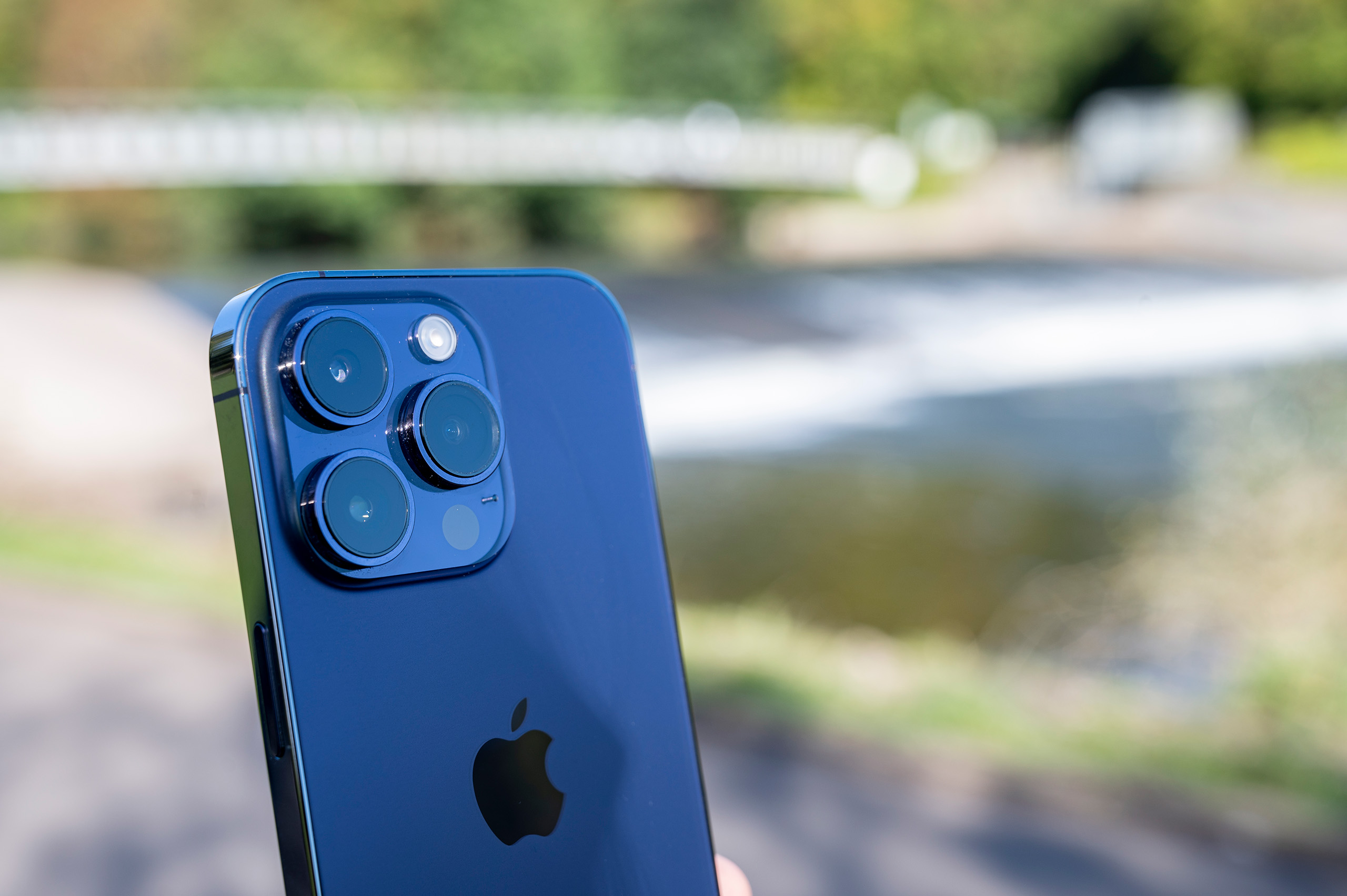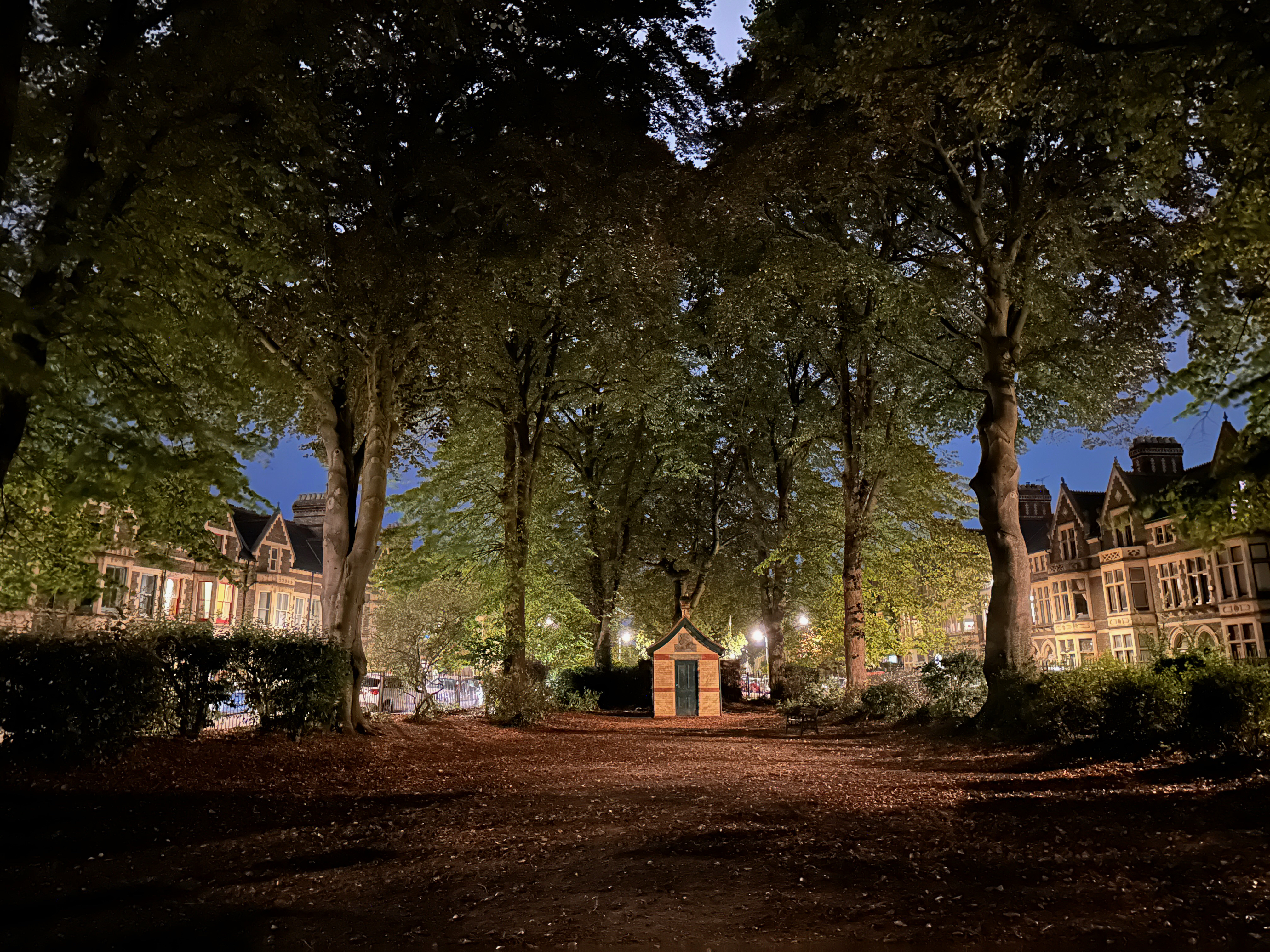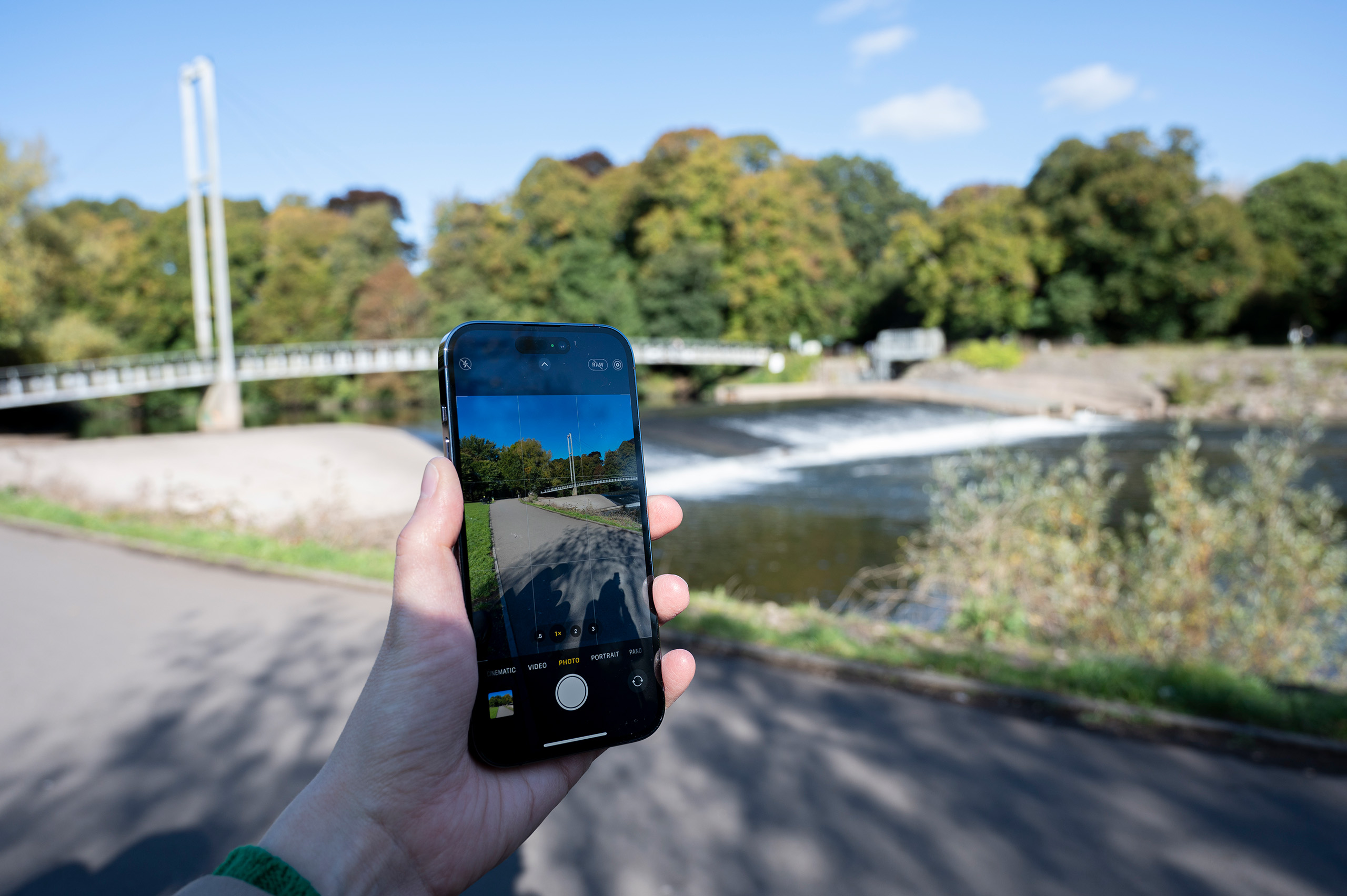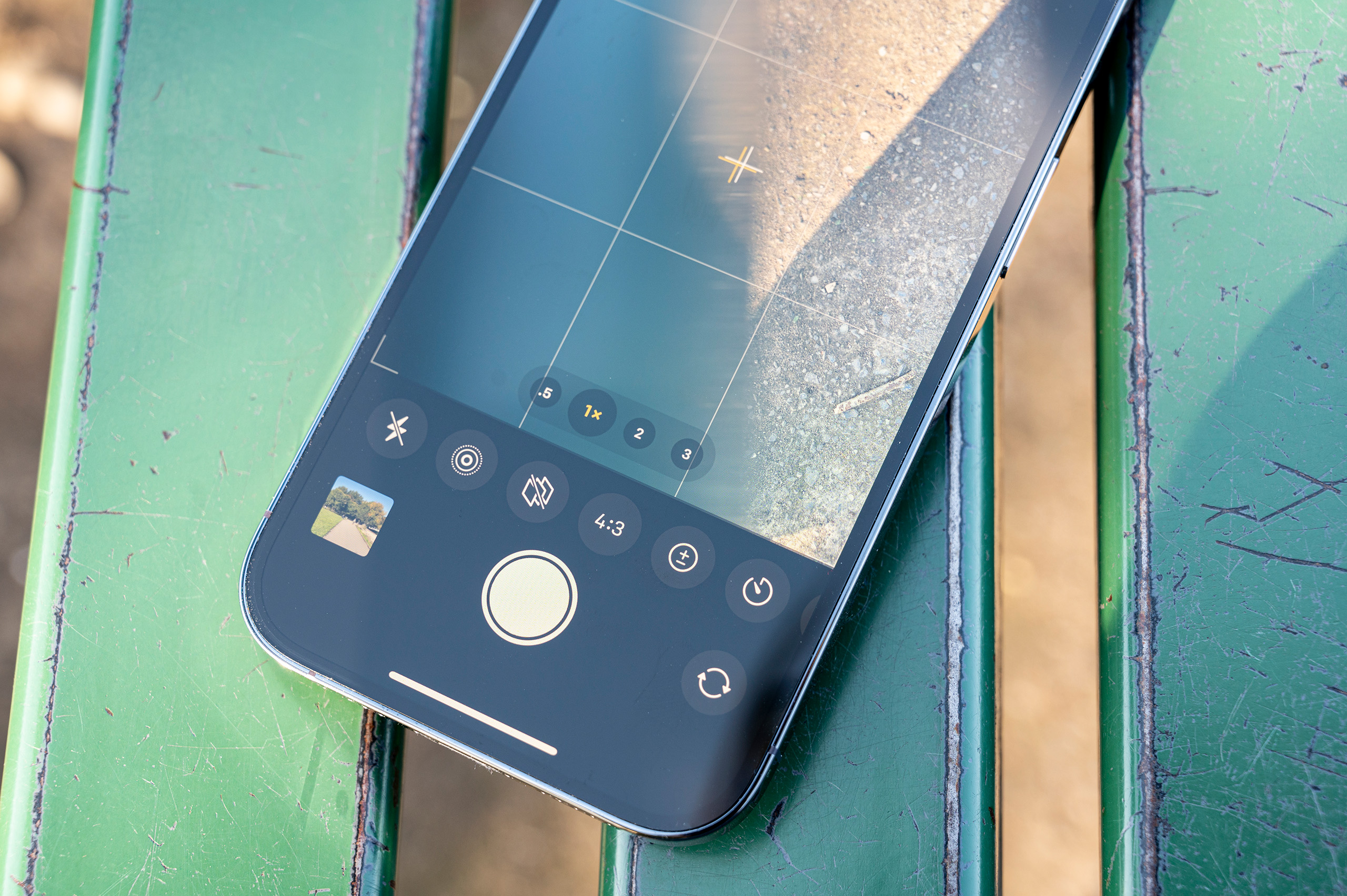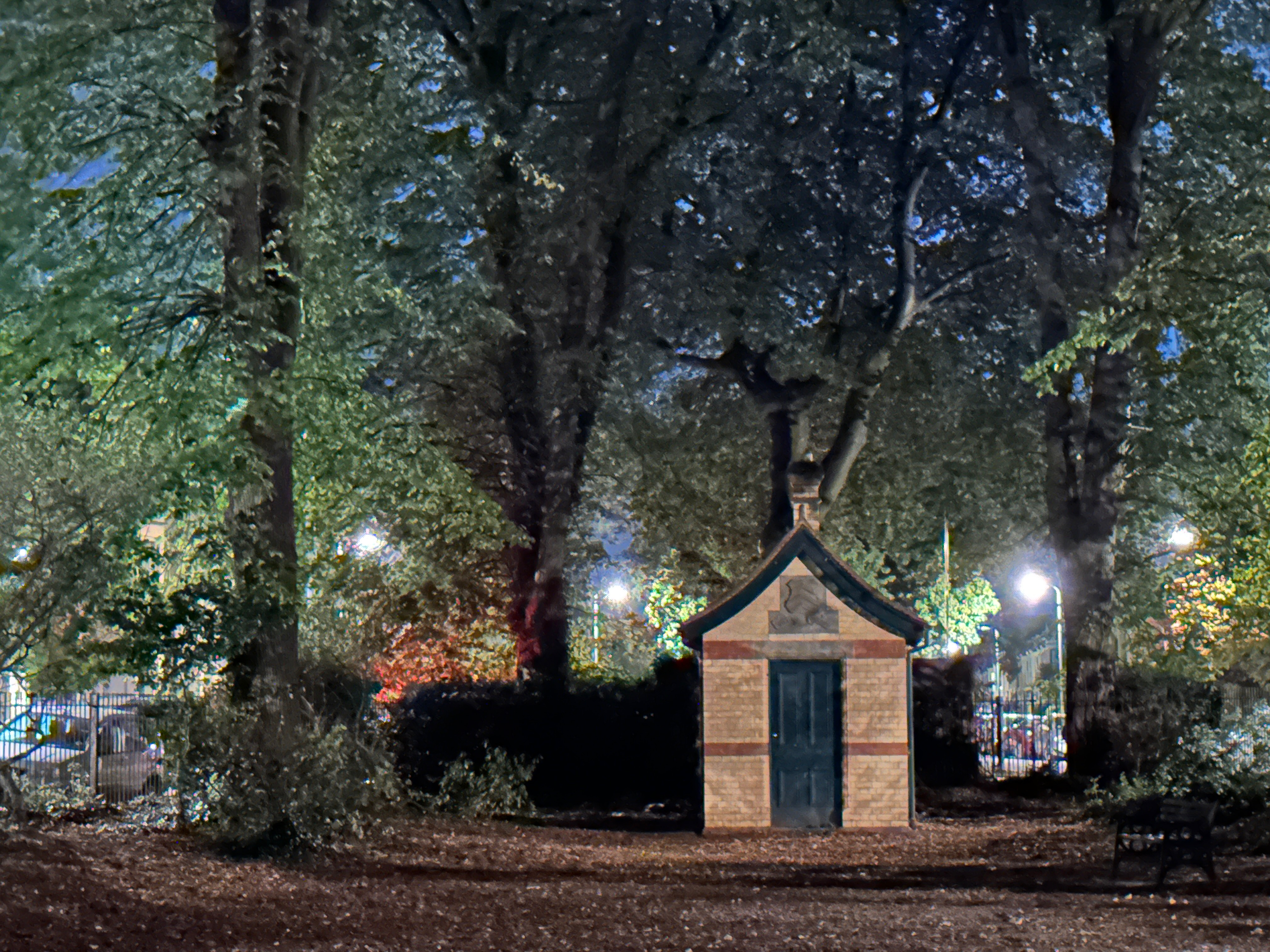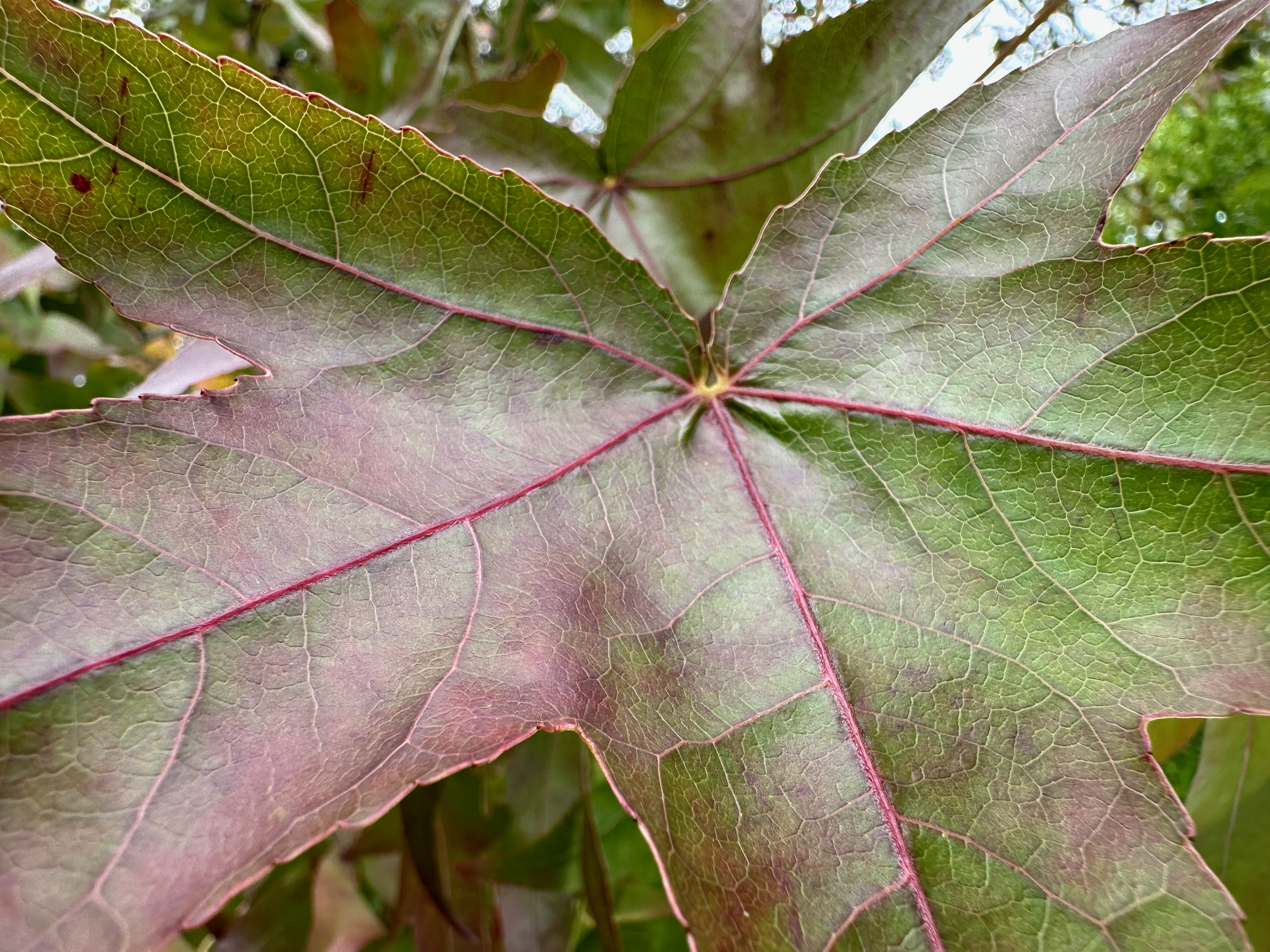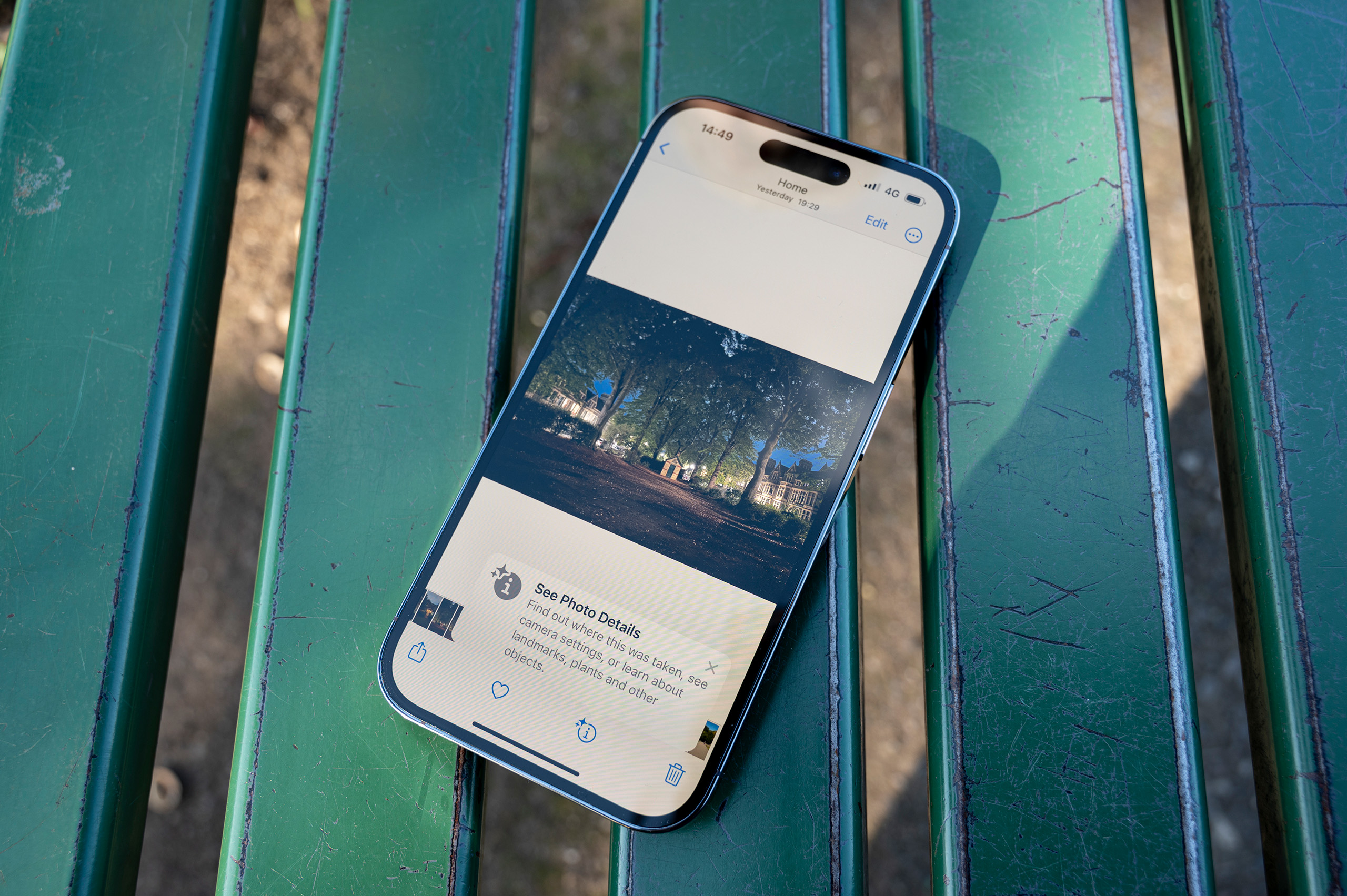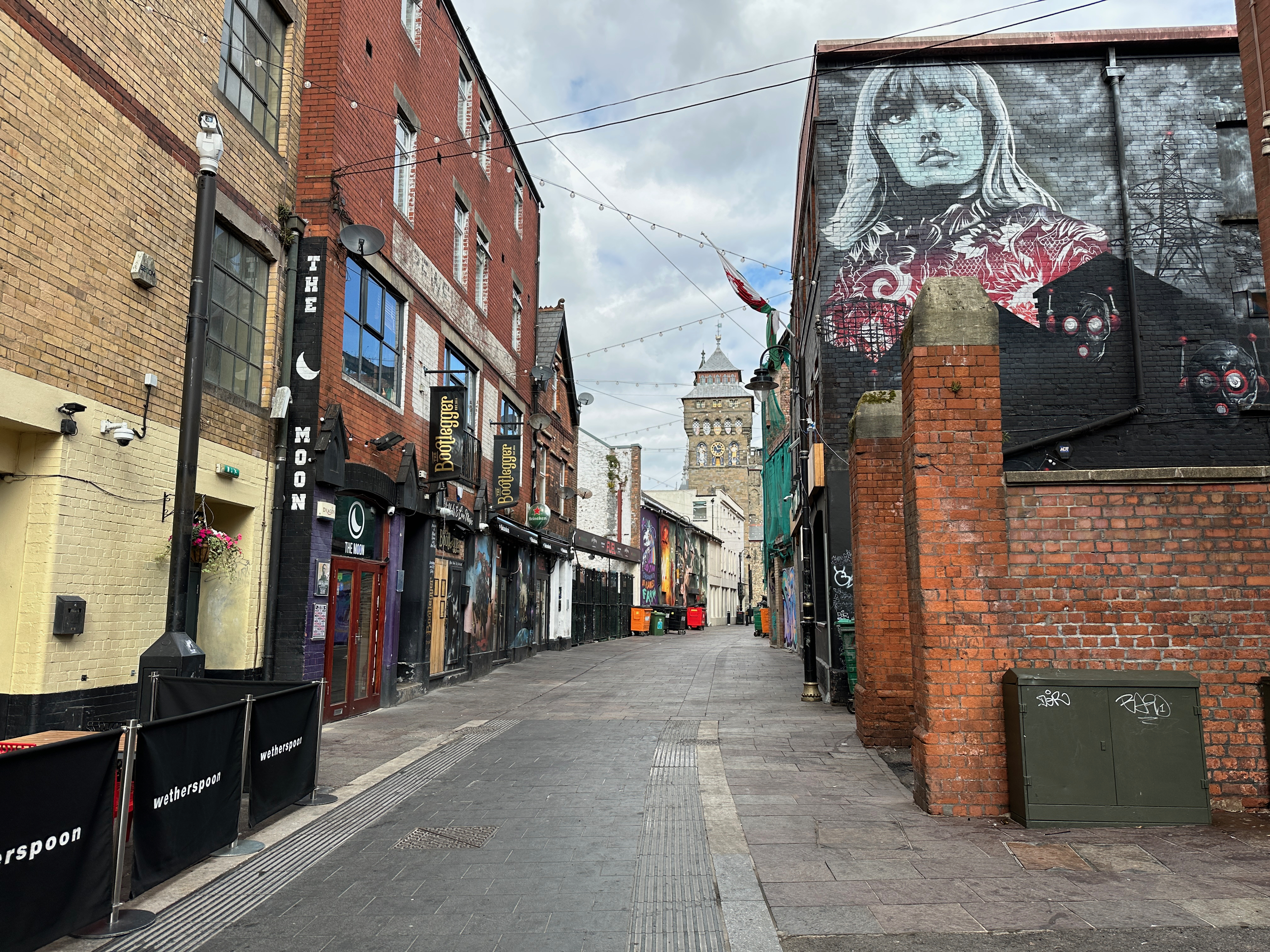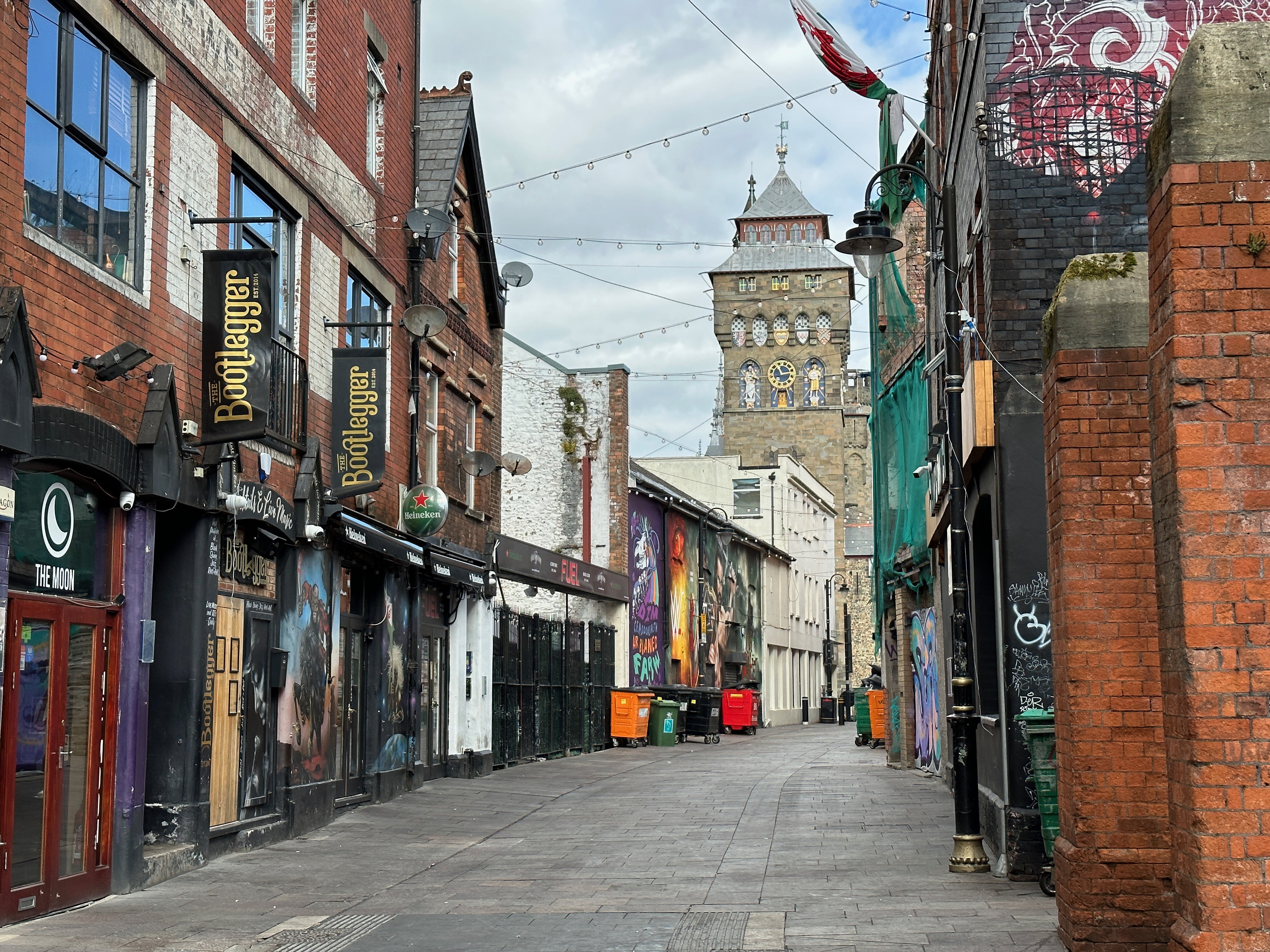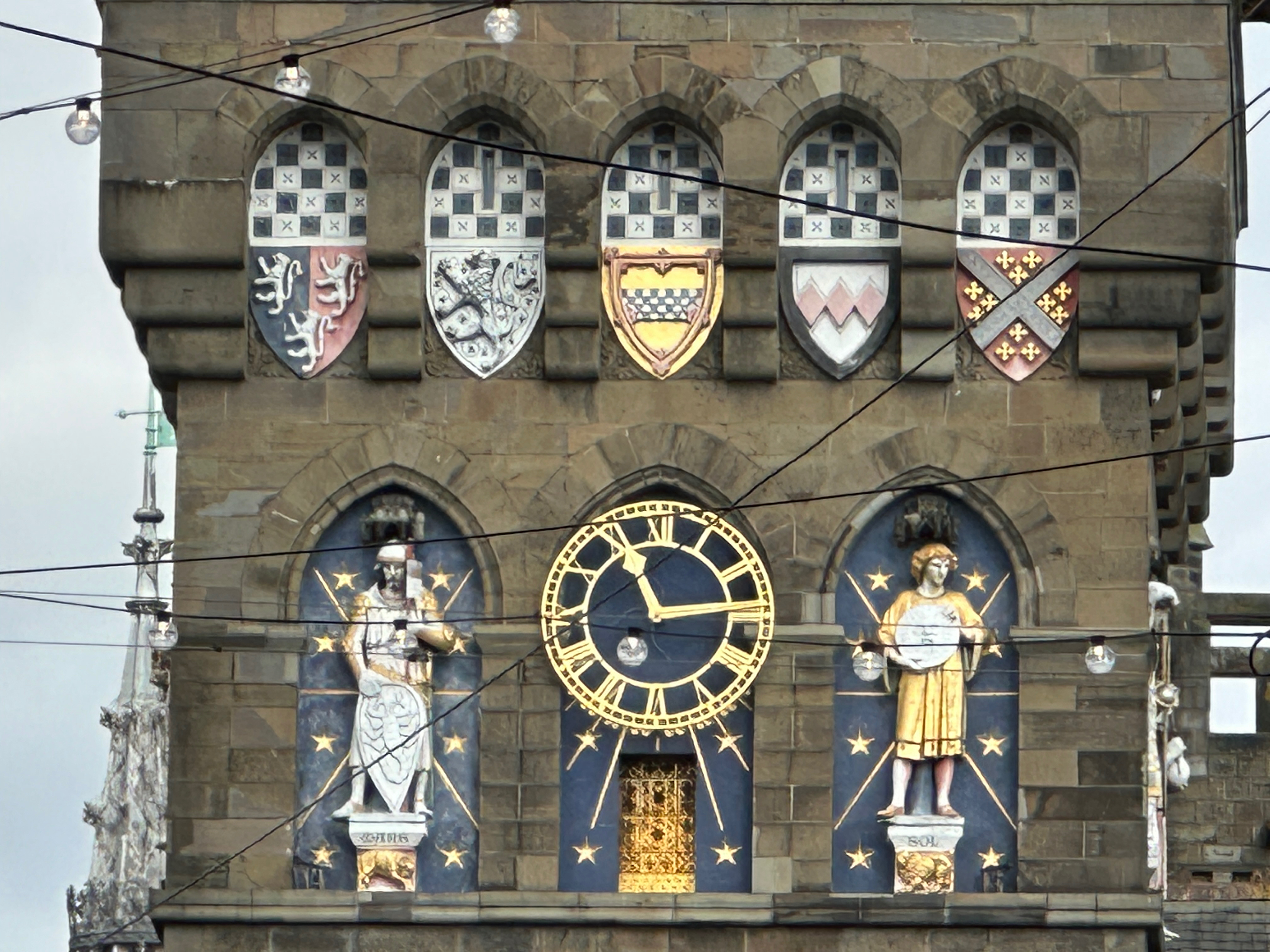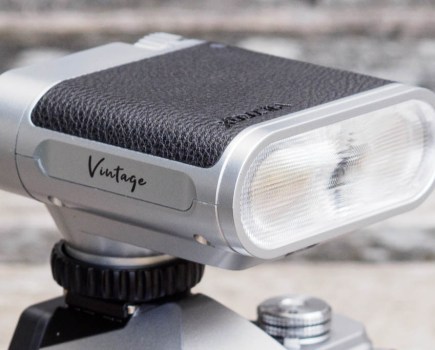Apple generally announces a new iPhone every Autumn, with each new iteration promising ever better photographic capabilities. This year’s Apple’s new iPhone models include the iPhone 14, iPhone 14 Pro and iPhone 14 Pro Max, with each offering something to appeal to those for whom the camera is the most important specification of their smartphone.
In this review, we’ll be concentrating on the iPhone 14 Pro, but it’s worth noting that the iPhone 14 Pro Max has the exact same camera setup – so in terms of picture quality and so on, you can also consider this to be a review of that. Find out how it performs, and if it makes it on to the list of the best iPhones for photography.
iPhone 14 Pro at a glance:
- 48MP wide camera, f/1.78 aperture, OIS (with 2x telephoto option)
- 12MP ultra wide camera, f/2.2 aperture
- 12MP 3x telephoto camera, f/2.8 aperture, OIS
- 4K video up to 60fps
- 12MP front-facing camera, f/1.9 aperture, autofocus
- 6.1-inch Super Retina XDR all-screen OLED display, 460ppi (iPhone 14 Pro) (6.7inch on Pro Max)
- Splash, water and dust resistant
- Operating system – iOS
- Processor A16 Bionic Chip
Hardware, Design and Features
It’s probably fair to say that the iPhone 14 Pro doesn’t represent a huge transformation from its predecessor, but there are still some important changes to consider. For the first time, Apple has pushed past the 12-megapixel barrier, giving us a 48-megapixel sensor for the main wide-angle camera. This is a quad-pixel sensor, meaning that by default, images will still be output at 12 megapixels as the camera uses pixel binning to create the image.
You can take advantage of the full 48-megapixel output if you choose to shoot in raw format. Apple does not officially disclose the size of its sensors, but it’s reported that the sensor is a 1/1.28inch type. The 48MP sensor is accompanied by 24mm (equivalent lens) with an aperture of f/1.78 and OIS (optical image stabilisation). This is slightly narrower than last year’s iPhone 13 Pro, which had an f/1.5 aperture – but, if reports that the sensor is larger this time around are true then it should still be better for low light.
Further boosts to low-light capability are promised from technologies such as “Deep Fusion” – something which was introduced a couple of iPhone generations back, and new for this model, the “Photonic Engine”. Apple doesn’t go to great lengths to explain what these things mean beyond trusting us to believe in their magic (aka computational photography), but essentially it appears to be taking multiple shots and combining them together for improved detail in low-light scenarios.
Joining the 48MP camera are two further 12-megapixel sensors, one offering an ultrawide 13mm equivalent (f/2.2), and a 3x zoom lens – equivalent 77mm f/2.8 with OIS. New for this year is a 2x zoom setting which makes use of the 48MP quad-pixel sensor to crop into the frame.
There hasn’t been any evolution of the iPhone’s native camera app, which remains fairly simple in operation, but which includes a Portrait mode plus a Night mode which will automatically activate when light is low. More on the camera app below.
You can buy the iPhone 14 Pro or the iPhone 14 Pro Max in a range of storage options. The smallest available is 128GB, which is the size I’ve been using for quite some time with various iPhone models and never had any problems with running out of space. That said, you can’t expand the storage, so if you feel like you’re going to need more, capacities up to 1TB are available, of course at a price premium.
In terms of design, Apple hasn’t in any practical terms changed the outward look of the iPhone 14 Pro, with it using the same squared off rounded edges that we’ve seen for a couple of generations. What is slightly different however is the display. The iPhone “notch” has gone, and has been replaced with a pill-shaped cutout which transforms into a “dynamic island” when the phone is doing certain things – such as face recognition.
In real terms, it means you get a little bit more display to play with, but not a huge amount. Another new feature is the “Always on” display, which means you can see displays such as the time even when the phone is in sleep mode. This is something which has been available on Android phones for several years, but the good news is that it doesn’t seem to have any major implications for battery life.
The iPhone 14 Pro’s 6.1-inch screen makes for a decently sized phone which isn’t too awkward to hold. Some may prefer the larger 6.7-inch Max version, particularly if you like to watch movies or play games on your smartphone – but it’s a little bit more cumbersome to use for day-to-day tasks.
The phone has a Ceramic Shield front, as well as a Textured matt glass back and stainless steel design. All of this is designed to be relatively tough and scratch resistant – but it’s probably still a good idea to use a case, particularly as the phone is quite slippy without one. The phone is also splash, water and dust resistant with a rating of IP68, meaning it has been tested to withstand being dunked under water (down to 6 metres) for up to 30 minutes.
Apple makes quite a big deal of its video capability, but it’s interesting to note that the company is sticking with 4K, rather than moving towards 8K like some of its rivals (particularly the Samsung S22 Ultra). Still, there’s the option to shoot at up to 60fps, and there’s also HDR with Dolby Vision, plus a ProRes option for video (though you’ll need a phone with at least 256GB storage to use ProRes at 4K). Cinematic mode, where a shallow depth of field effect is created has been included once again, with capability of shooting at 4K up to 30fps.
Another specification that Apple is coy about is battery. The battery is rated at 3200mAh, which doesn’t sound like much but we are told it can provide up to 23 hours of video playback. In our tests, we’ve found it easily lasts a complete day even with relatively heavy use.
If you’re shooting a lot of 4K video, you might want to carry a battery pack around with you. Fast charging is available, with up to 50% charge in around 30 minutes with a 20W charger. Wireless charging is also possible. As has been the case for a couple of generations, a charging plug is not included in the box. This is apparently for “environmental” reasons, with the idea being that most of us already own more than enough plugs (probably a fair summation). A USB-C to Lightning cable is provided.
Apple iPhone 14 Pro Camera App
Apple has been using the same native camera app for its iPhones for quite some time now, albeit with some tweaks and additional features incorporated over the years.
It’s disappointing after all this time that Apple still sees fit to ignore pleas for an “advanced” or “pro” mode within the native camera app, but there are hundreds of different third-party apps available which give you this functionality if you require it.
It’s also fair to say that the native app being straightforward can be seen as a benefit, giving you scope to concentrate on composition and the like, rather than worrying too much about settings – for many that will be a positive thing.
The standard mode you’ll probably use most frequently is the “Photo” mode. From here, you can access all the different lenses (plus the 2x digital zoom option), as well as shoot in raw format and create “Live” photos (whereby a small video accompanies your shot).
Tapping around the screen will change the focus point if you need to, and you can also dial in some exposure compensation by moving your finger up and down the screen to add or remove brightness. Holding down your finger on the screen will create an AE/AF lock, so you can focus and recompose if you wish.
It’s also in this standard mode that other settings, such as Night and Macro, can be used – albeit they are automatically activated depending on if the phone picks up the right conditions – i.e., dark for Night mode and being close to something for Macro. You have the option to switch off these modes once they are activated if you prefer.
Night mode has been around on iPhones for a while and essentially works by grabbing several short exposures and blending them into one image for the best results. The phone will automatically judge how long it needs to record short exposures for, usually depending on exactly how dark it is. If the phone detects it is on a stable surface, it will likely expose for longer. It’s important to keep relatively still for the shots to match up together.
Macro mode was introduced for the iPhone 13 Pro so it’s no surprise to see it back for the 14 Pro. If you bring the phone close to a subject, you’ll see it automatically snap into macro mode. It uses the ultra-wide-angle lens to do this, so you might sometimes find you get a better result by turning off macro – which will see the camera return to the standard 48MP lens. It’s worth experimenting with close-ups to see how it works for you.
Swiping up on the composition window will see some additional settings you can use, including changing the aspect ratio (4:3, Square and 16:9 are available), adding a filter, or using different Picture Styles. Again, it’s worth experimenting with all of these to see which produces the look you like the best. Picture Styles can also be tweaked to match your own preferences too.
The other shooting modes available in the native app include a Portrait mode (for creating shallow depth of field effects), which is primarily intended to be used for people, but also works well with other subjects such as pets, a Video mode, and a Panoramic mode.
Performance – Image Quality
Apple has been producing extremely capable cameras in its smartphones for many years, so we didn’t expect the iPhone 14 Pro to be any different. While it’s true that it’s not a particularly big leap in quality from its predecessor, that’s perhaps more of a testament to how good the phones are in the first place, rather than a particularly damning indictment.
It works well in a good variety of situations, producing pleasing pictures in all sorts of conditions. As we’d expect, the best results are seen from the main lens, with the new 48-megapixel sensor producing excellent results (albeit not a noticeably vast improvement from the iPhone 13 Pro). The ultra-wide-angle lens also produces excellent results, with little distortion, though it struggles a little in very low light to produce the same kind of clean images that the main sensor can muster up (as we’d expect).
Where the 48MP sensor comes in particularly useful is when shooting at the new 2x option, as not only do you get excellent flexibility to choose between 1x, 2x and 3x options, but it also produces good images in low light thanks to the wider aperture lens in conjunction with the very good Night mode. The 1x sensor will automatically kick in if you’re shooting at very low light and want to shoot at 3x too. It’ll just crop into the image it takes.
Further digital zoom is available, but we’d probably avoid using that in most situations unless absolutely desperate to get closer to the subject.
Macro mode is something we saw in the last iPhone and once again here it produces excellent results when you want to get very close to a subject. The detail produced is wonderful, and it’s great to have that option available.
Another mode which has been around for a while is Portrait mode. It continues to work well here, producing pleasing results even with relatively fussy outlines. New here for the 14 Pro is the option to choose between 1x, 2x and 3x, so there’s a bit more flexibility when compared to the 13 Pro.
Apple iPhone 14 Pro Value for Money
Apple is not exactly known for producing cheap smartphones, but in comparison to other flagship smartphones, the iPhone 14 Pro isn’t too badly priced.
The smallest capacity iPhone 14 Pro is cheaper than the lowest capacity Samsung S22 Ultra, for example, making it quite competitively priced.
Of course, it still costs over £1000, making it expensive for anybody on a strict budget. If you want an iPhone but have more limited funds, your options are to look for an older version (the iPhone 13 Pro for example, which isn’t massively dissimilar) or plump for the non-Pro version of the iPhone 14 – where you’ll lose the additional lens and a few other features.
Another option, particularly if you want to save money, is to look at the Google Pixel 7 Pro, which is available for £849.
Apple iPhone 14 Pro Verdict
There is a lot to like about the iPhone 14 Pro, and it undeniably produces some excellent imagery. It’s fair to say that it’s the best iPhone yet for photographers – but that’s pretty much something we say every time a new one is released.
As good as it is, it’s not overwhelmingly exciting, and if you’ve already got an iPhone 13 Pro, there’s not a huge amount here to warrant an upgrade. If you’ve got a 12 Pro or older, it’ll be more of a leap and therefore more worthy of the outlay.
Images directly from the camera are very good, with bright, vibrant, and well-detailed images. The new 48-megapixel sensor doesn’t necessarily produce images which are a world away from those made by the 12-megapixel sensor of the iPhone 13 Pro in ordinary or well-lit conditions, but it proves to be useful for digital zoom and in low-light scenarios.
It’s a criticism we levy at the iPhone series pretty much every time a new one is released, but we’d love to see more in the way of an enthusiast or professional mode – even if it was a little hidden away within the native app. Yes, there are third-party apps available, but it’s a shame not to have a more comprehensive offering directly from Apple.
Lots of people will be devoted iOS users, in which case, the iPhone 14 Pro is certainly the best iPhone there is to date for photography. Go for the Max if you prefer a larger screen, as the cameras are the same between them. If you’re not loyal to Apple, we’d still recommend the Samsung S22 Ultra as the best overall smartphone for photography – particularly if budget is not an issue. With the latter device, you get an extra lens and more flexibility in shooting modes.
Overall – the iPhone 14 Pro is an excellent smartphone for photography, and it’s very easy to recommend. Images and video are excellent, and using it is also straightforward. It’s not perfect, but if you’re a fan of iOS it’s unlikely you’ll be disappointed.

For more options read out Best camera phones for photography
Related articles:
iPhone vs Android: Which is better for photography?
iPhone 14 Pro vs Samsung S23 Ultra: which smartphone is best for photographers?
iPhone 14 Pro vs Google Pixel 7 Pro


